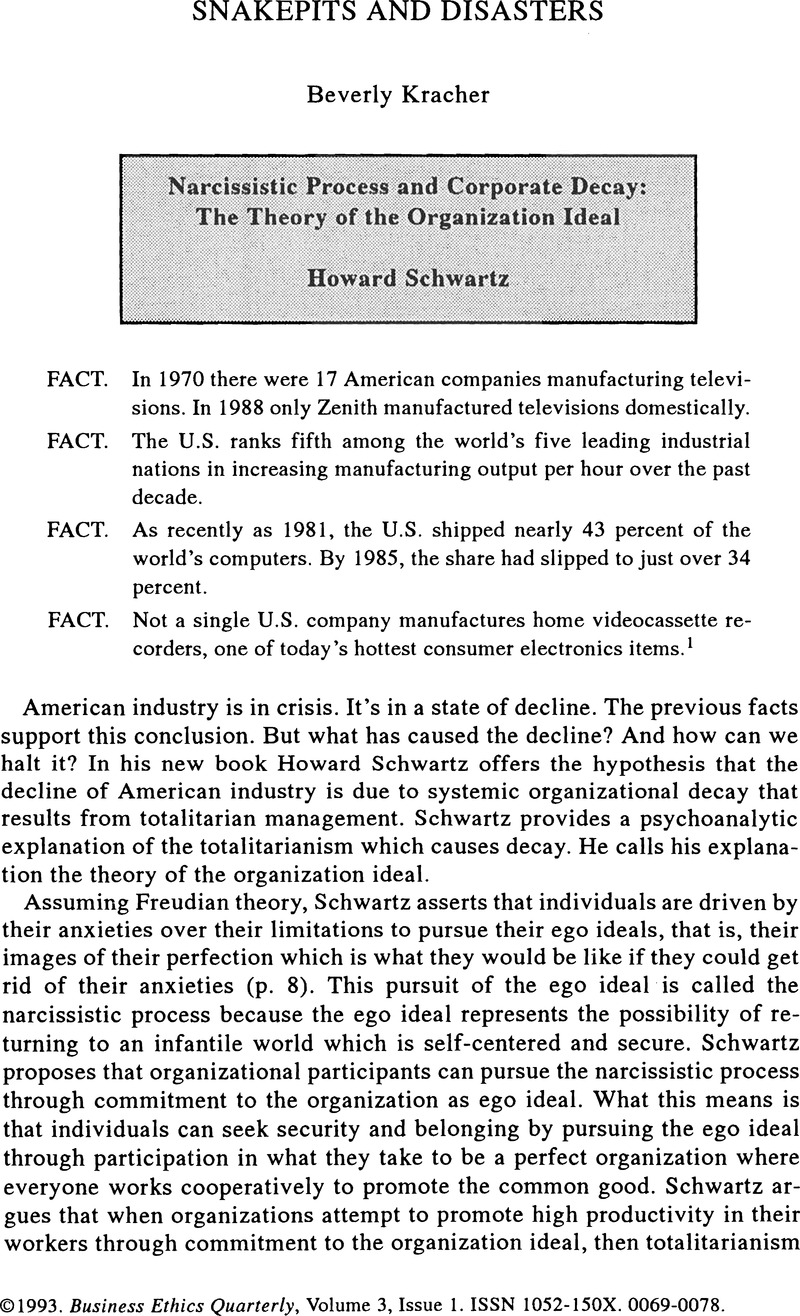No CrossRef data available.
Article contents
Snakepits and Disasters
Published online by Cambridge University Press: 23 January 2015
Abstract

- Type
- Review Articles
- Information
- Copyright
- Copyright © Society for Business Ethics 1993
References
Notes
1 These facts are taken from “The Japanese Conspiracy,” a case in Scott, H. Partridge’s, Cases Irt Business & Society (New Jersey: Prentice-Hall, 1989), pp. 264–74Google Scholar.
2 For their particular views, see Chris, Argyris’s, Personality and Organization: The Conflict Between the System and the Individual (New York: Harper and Row), 1957Google Scholar; Douglas, McGregor’s, The Human Side of Enterprise (New York: McGraw-Hill), 1960Google Scholar; and Rensis, Likert’s, New Patterns of Management (New York: McGraw-Hill), 1961.Google Scholar
3 See Chester, Barnard’s, The Function of the Executive (Cambridge: Harvard University Press), 1968.Google Scholar
4 From Charles, Perrow’s, Complex Organizations, 3rd edition (New York: Random House), 1986, p. 114Google Scholar. His discussion of the human relations approach is contained in chapter three.


